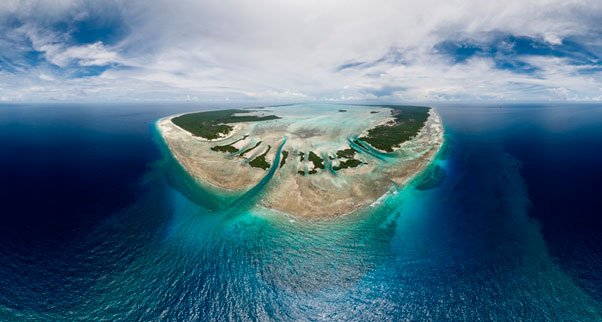
New monitoring and reporting framework aims to better protect World Heritage Sites from invasive alien species
A team of international scientists have devised a new monitoring and reporting framework to help protect World Heritage Sites from almost 300 different invasive alien species globally, including, rats (Rattus spp.), cats (Felis catus), lantana (Lantana camara) and Argentine ants (Linepithema humile).
Lead author Ross Shackleton worked with invasive species experts from around the globe, who suggest the new ‘tool’ could ultimately help protect World Heritage Sites like Galapagos, Serengeti and Aldabra Atoll from future threats.
UNESCO World Heritage Sites are areas of outstanding universal value and conservation importance. However, they are threatened by a variety of global change drivers, including biological invasions from a range of terrestrial, freshwater and marine-based invasive alien species.
The team, who assessed biological invasions and their management in 241 natural and mixed World Heritage Sites from documents collated by UNESCO and the International Union for Conservation of Nature (IUCN), found that reports on the status of biological invasions were often deficient in data.
The research, published in Biodiversity and Conservation, outlined that while some reports were "very informative", the scientists say they were hard to compare because no systematic method of reporting was followed.
Shackleton added that “Detailed information on invasive alien species management undertaken in World Heritage Sites was available for fewer than half of the sites that listed invasive alien species as a threat," and that “there is clearly a need for an improved monitoring and reporting system for biological invasions in World Heritage Sites and likely the same for other protected areas globally."

The new framework devised by the scientists, which has been tested at seven World Heritage Sites, covers collecting information and reporting on: introduction pathways, alien species present, impacts, management, predicting future threat and management needs, the status of knowledge and gaps, and, assigning an overall "threat score" to the protected area.
Based upon the current review of invasive species in the Galapagos Islands, carried out in collaboration with the Charles Darwin Foundation (@CDF), the Galapagos National Park Directorate (@GNPD) and the Galapagos Biosecurity Agency (@GBA), co-author Heinke Jäger stated “This evaluation has provided an opportunity to predict and rank the highest risk species and pathways to better inform management and prevent additional introductions of invasive species to the islands. These invasive species include mammals and insects and that are already threatening the survival of some of the animals made famous by Darwin, such as the giant tortoise and Darwin’s finches.”
Co-author Arne Witt said, “We need urgent action right now to reduce the severity of these threats and we believe that the development of this monitoring and reporting framework is a step in the right direction to protecting areas moving forward."
In testing the devised framework, which categorizes the level of threat posed by invasive alien species as "very high", "high", "moderate" and "low", the researchers have already yielded more information than from past monitoring initiatives.
For example, the invasive alien species threat level indicated in the 2017 IUCN World Heritage Outlook for the Serengeti, Keoladeo, Doñana and the Vredefort Dome sites was "data deficient" or "low threat" or "not listed", whereas all of these World Heritage Sites are now categorised as facing "moderate" to "high" threats from biological invasions.
Co-author David Richardson said, “World Heritage Sites face growing threats from a range of biological invasions which impact upon native biodiversity and the delivery of ecosystem services. Not only that, but invasive alien species are a financial burden as costs for management can be extremely high. One key element of the new framework is listing all invasive alien species present, where we can track the changes in threat or implementation of effective management over time."
This is exemplified by work done on Aldabra Atoll where, according to co-author Nancy Bunbury, “There has been a decrease in the number of IAS listed due to effective eradications, highlighting great management success at the site over the last few years."
The scientists, in their recommendations, also suggest that funding should be made available to conduct surveys at all under-resourced World Heritage Sites, to inform the reactive "state of conservation" assessments undertaken by UNESCO and IUCN, and that monitoring could also be enhanced by members of the public as part of a series of "citizen science" projects.
Full paper reference:
Shackleton, R.T., Bertzky, B., Wood, L.E., Bunbury, N., Jäger, H., van Merm, R., Sevilla, C., Smith, K., Wilson, J.R.U., Witt, A.B.R. and Richardson, D.M. (2020) Biological invasions in World Heritage Sites: current status and a proposed monitoring and reporting framework. Biodiversity and Conservation, DOI: 10.1007/s10531-020-02026-1
The paper is available open access here: https://link.springer.com/article/10.1007/s10531-020-02026-1




